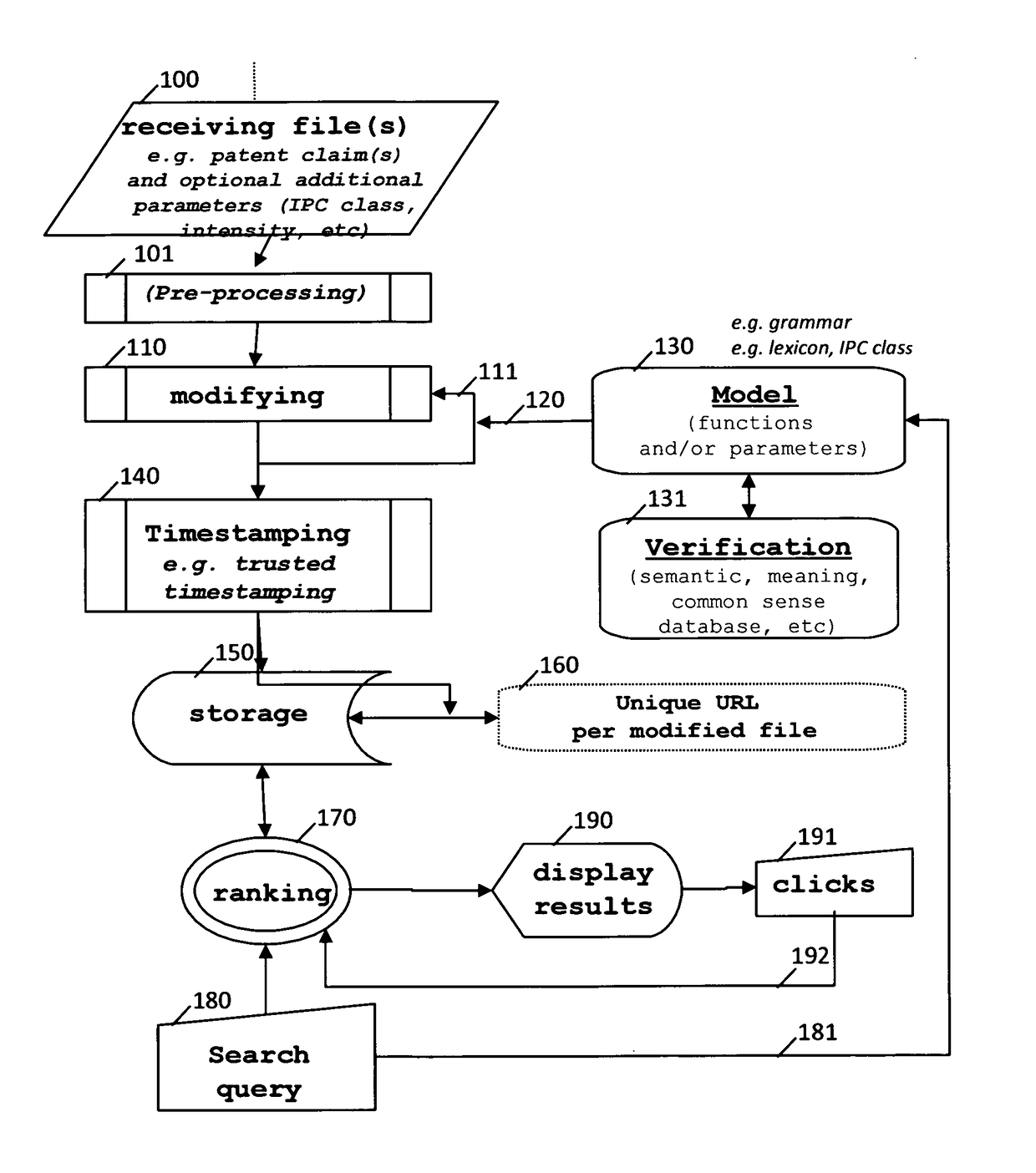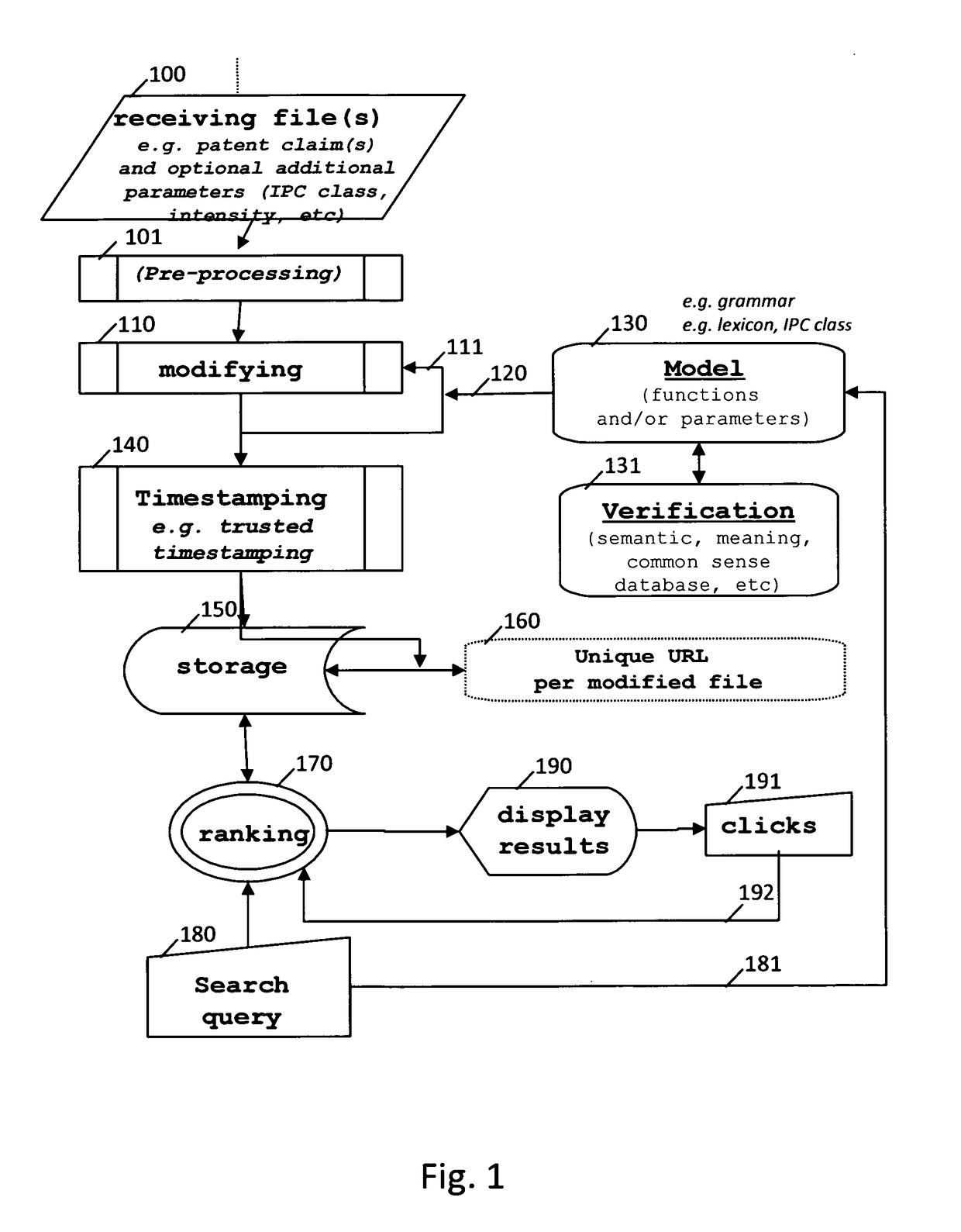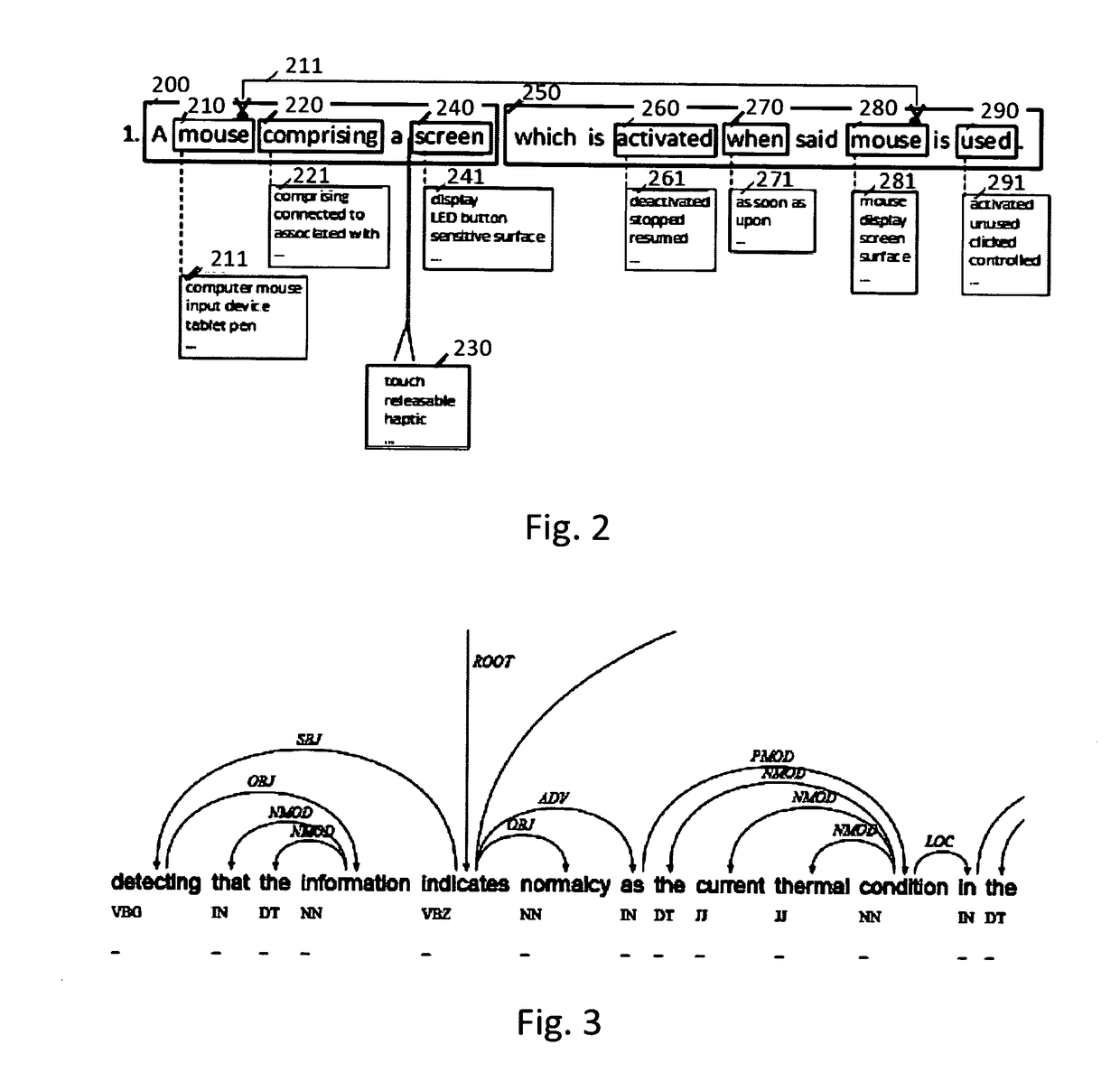Methods and systems of handling patent claims
- Summary
- Abstract
- Description
- Claims
- Application Information
AI Technical Summary
Benefits of technology
Problems solved by technology
Method used
Image
Examples
Embodiment Construction
[0074]While the systems and methods are illustrated with respect to patent claims' embodiments and applications, they are equally applicable to virtually any human creation or work of authorship, including for example music songs, movie clips and paintings.
[0075]In the present description, “A and / or B” means “A”, “A and B”, “B”, but also “A or B”. The expression “A and / or B and / or C” comprises all combinations with 1, 2 and 3 words. “A and / or B and / or C” thus means “A”, “B”, “C”, “A and B”, “A and C”, “B and C”, “A or B”, “A or C”, “B or C”, “A and B and C”, “A or B and C”, “A and B or C”, or “A or B or C”. The rule applies for superior orders. It can be assumed that “A or B” in a written description is not always strictly equivalent to the mention “A” alone or the mention of “B” alone, the latter mentions do not explicitly underline the absence of an alternative. Nevertheless, such expressions comprising “and / or” in the present description are intended to cover all combinatorial po...
PUM
 Login to View More
Login to View More Abstract
Description
Claims
Application Information
 Login to View More
Login to View More - R&D
- Intellectual Property
- Life Sciences
- Materials
- Tech Scout
- Unparalleled Data Quality
- Higher Quality Content
- 60% Fewer Hallucinations
Browse by: Latest US Patents, China's latest patents, Technical Efficacy Thesaurus, Application Domain, Technology Topic, Popular Technical Reports.
© 2025 PatSnap. All rights reserved.Legal|Privacy policy|Modern Slavery Act Transparency Statement|Sitemap|About US| Contact US: help@patsnap.com



